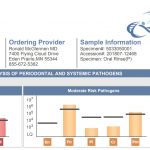
Challenge: Patient with extremely limited history of dental care presents seeking dental wellness. Although patient is anxious, she is highly motivated to create a healthier dental foundation.
Background: A 33-year-old woman with history of acid reflux, seasonal allergies and anemia is seeking to better her dental care. The patient has limited recollection of any dental care in her life, even childhood. The patient’s home care consists of manual tooth brushing 1-2 times per day with the ...
Read More









